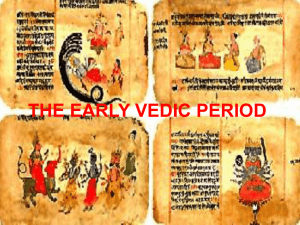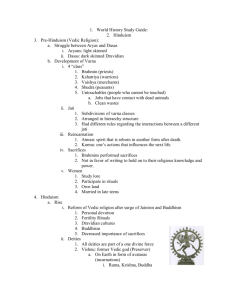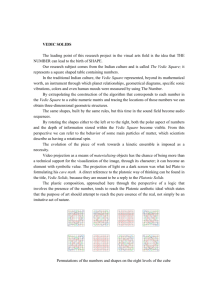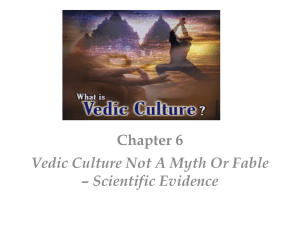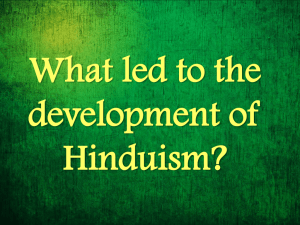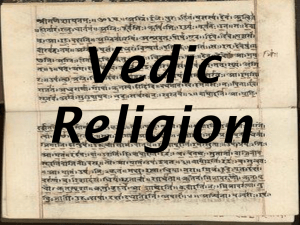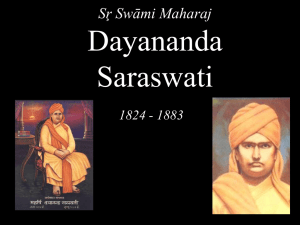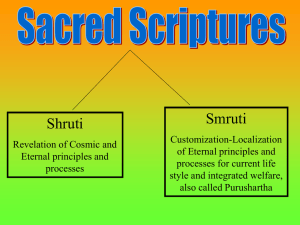Lecture 2 - Mangala Vihara
advertisement
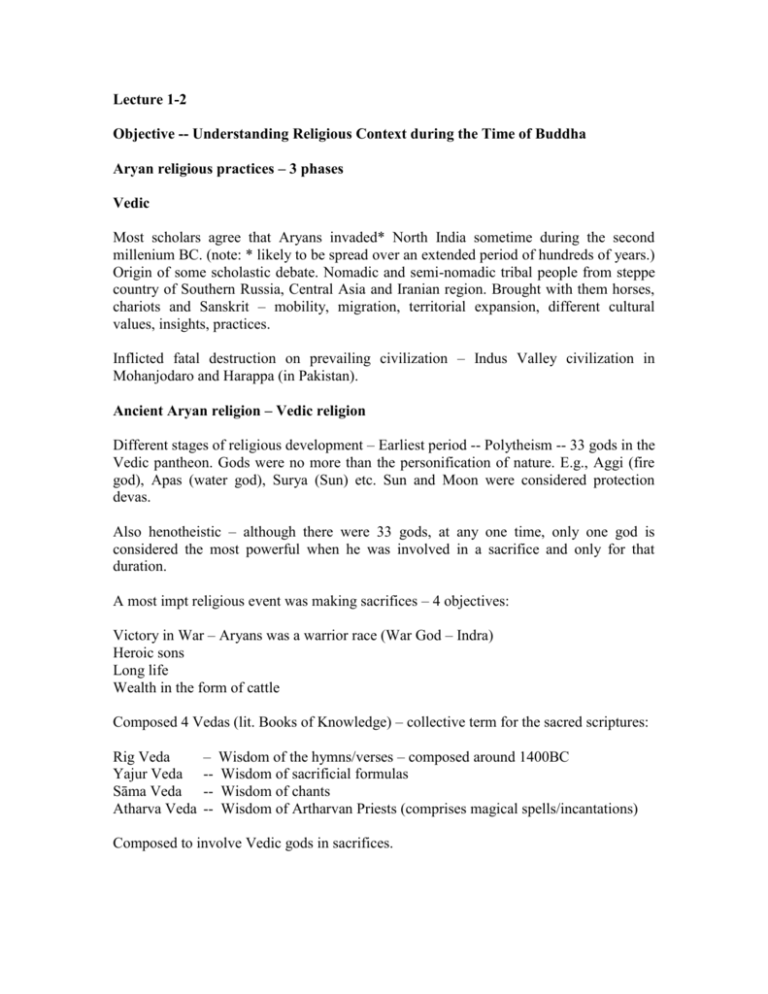
Lecture 1-2 Objective -- Understanding Religious Context during the Time of Buddha Aryan religious practices – 3 phases Vedic Most scholars agree that Aryans invaded* North India sometime during the second millenium BC. (note: * likely to be spread over an extended period of hundreds of years.) Origin of some scholastic debate. Nomadic and semi-nomadic tribal people from steppe country of Southern Russia, Central Asia and Iranian region. Brought with them horses, chariots and Sanskrit – mobility, migration, territorial expansion, different cultural values, insights, practices. Inflicted fatal destruction on prevailing civilization – Indus Valley civilization in Mohanjodaro and Harappa (in Pakistan). Ancient Aryan religion – Vedic religion Different stages of religious development – Earliest period -- Polytheism -- 33 gods in the Vedic pantheon. Gods were no more than the personification of nature. E.g., Aggi (fire god), Apas (water god), Surya (Sun) etc. Sun and Moon were considered protection devas. Also henotheistic – although there were 33 gods, at any one time, only one god is considered the most powerful when he was involved in a sacrifice and only for that duration. A most impt religious event was making sacrifices – 4 objectives: Victory in War – Aryans was a warrior race (War God – Indra) Heroic sons Long life Wealth in the form of cattle Composed 4 Vedas (lit. Books of Knowledge) – collective term for the sacred scriptures: Rig Veda Yajur Veda Sāma Veda Atharva Veda – ---- Wisdom of the hymns/verses – composed around 1400BC Wisdom of sacrificial formulas Wisdom of chants Wisdom of Artharvan Priests (comprises magical spells/incantations) Composed to involve Vedic gods in sacrifices. According to Rig Veda – Yama was the first man to die. He discovered the highest heaven. Men subsequently aspired to join him there to live forever. Brahmanism Vedic faith underwent transformation. During Buddha’s time, it was known as Brahmanism – modification. Monotheism – only one God – considered the most powerful – Lord of all beings, the Creator God = Prajapati (or Brahma). He created all and would eventually absorb all. Belief was monism – out of Sat (a neuter principle) or Tad ekam (that one), everything in the world comes into being. Sat was later known as ātam (soul). Sacrifices became the most impt religious event – purification – path to heaven. Very elaborate, very expensive and completely dominated by priestly caste – the Brahmins. They had a monopoly, strangle-hold. Became very rich and powerful. In some cases, able to outshine the Ksatriyas/Khattiya (warrior caste) in wealth and power. Many Ksatriyas/Khattiya grew disillusioned with the conventional religious thinking of the day. Began to question the meaning of life. Seeking truth. What is kamma? Who created us? If there were atman, then what happened to it after death? Hinduism Finally, as it is known today – Hinduism – every Indian philosophy with a strong popular following was absorbed into Brahmanism, including Buddhism. Buddha was made 9th incarnation of Vishnu. VEDIC LITERATURE – 4 PHASES Vedic – 4 Vedas Brahmanas -- Commentary works written on the Vedas. In that, there were elaborate descriptions on the rituals of the sacrifices – procedures, size of altar, shape, minute details, tedious. Written by Brahmins. To their benefit because they had to be feasted richly before they perform the ceremony. They had a monopoly, strangle-hold. Aranyakas – semi-philosophical texts (āran means forest) – some Brahmins started pondering about purpose of life. Went to forest and thought through many philosophical question. Upanishads – purely philosophical texts and teachers gathered many students to discuss philosophical questions (numerous texts). Vedic literature was concluded in the 7th century BC. But some scholars said parts of the Upanishads had been corrected and recast after rise of Buddhism in response to some of the Buddha’s sayings.
